Evolution of The Classroom is Going … Where?

It’s not about the “what.” It’s about the “why?”
In every educational project, there are a number of design directions we are asked about, tasked with addressing, and given the opportunity to solve for our clients. Inevitably, many of the topics are perceived as a binary choice. Unfortunately, the thought that any design direction is binary – black or white – does it “have” it or “not” – is never really the case. The vast majority of design challenges faced in educational design actually have a variance of appropriate responses and options to explore that create the best-case scenario – one that is custom to each case, each client, each location.
The success of every school is the learning that occurs within, and the classroom has been the focus of educational delivery for decades (right or wrong). If we look at the history, we can understand why classrooms have changed and as we look into the future, the “why” is where the solutions have been and will develop the best results moving into the future.
Where do we begin? What most of us remember our classroom as were the square room where students are sat at desks in rows, the teacher’s desk operates as the focus and control point, the blackboard was the main teaching area, and the classroom perimeter littered with resources. Why was it this way?
Prior to the industrial age, the small “one room schoolhouse” was local, walkable, and where children learned in a blended environment with peers ranging from 6 to 18 years old learning together, and maybe most importantly, helping each other. Inefficient but ultimately effective. Enter the industrial age, where everything changed. Why? If the delivery were streamlined, like the assembly line, education could be an efficient system. It could include new schools, growing populations, pupils segregated by age, and create a process for learning.
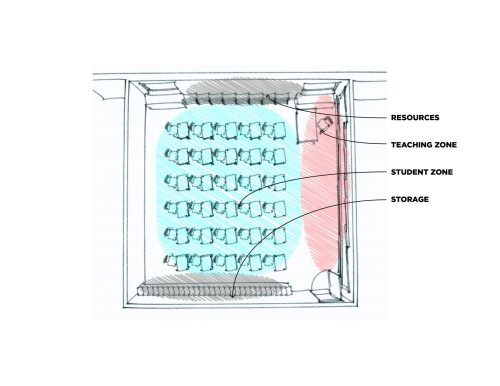
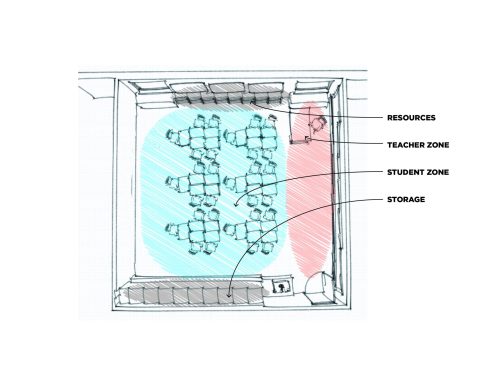
So, enter the “factory” model, where the classroom is a simple step along the way to building an adult. Through this model, the teacher is the supervisor, commanding from front and center, the students work at their desks with resources available as allowed. We can argue about how well or poorly this worked, but the majority of our current school facilities were designed and constructed like this.
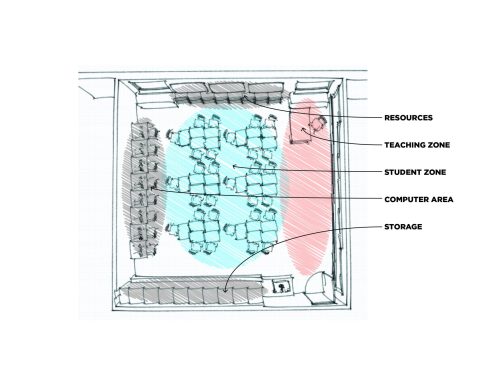
Students learn and advance better when learning in groups. Reconfiguring the classroom to allow and function in groups was done with future changes through added group areas and a simple breakdown of the original layout. Also, more resources and areas are added to enhance this environment. This includes increased technology, like computers as a resource/tool for learning.
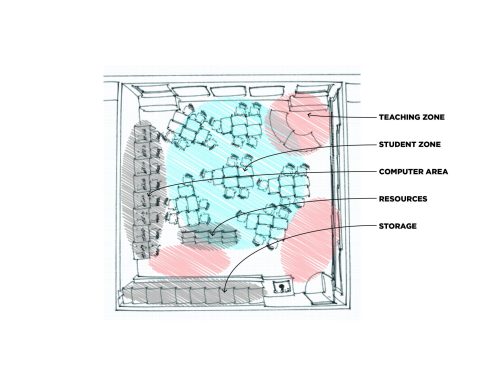
The need for the integration of multiple computers as well as new dedicated areas for different teaching and learning styles makes the classroom a more flexible environment, such as soft seating, small groups, quiet areas, and more. However, the classroom is still the same footprint, and little has been adapted: the teacher maintains a central role in the classroom layout, but grouping students together helps develop team learning skills. The classroom needs changes – and the “why” is obvious. The classroom is too small to be effective for all these activities.
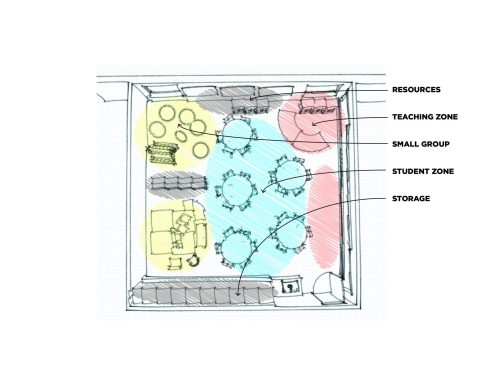
Two decades into the 21st Century and 1:1 technology, today we find a decentralized classroom with more flexible furniture easily manipulable by the student and/or teachers, multiple learning modalities addressed in the same room, the same walls, accommodating group learning, soft seating, breakout areas, and more. In some cases, breakout spaces are created, and others increased classrooms share co-joined areas to allow more collaboration sharing of spaces, and more flexibility to teachers in both classrooms. Studies have shown that more flexible furniture, more ways to accommodate different learning modalities, to individualize teaching, and learning creates the best environment for education.
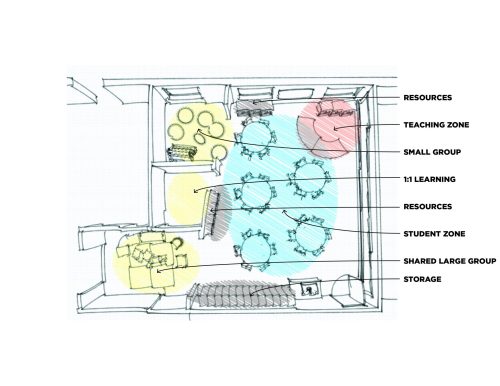
It is important to note that every education space is created with innovative and flexible designs to meet the instructional models of individual teachers.



